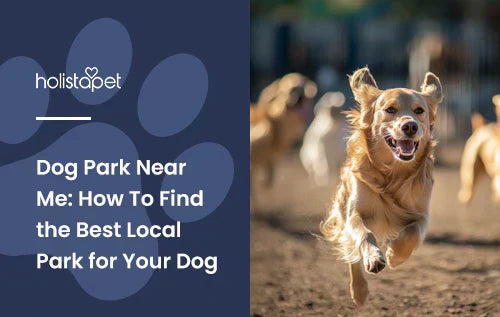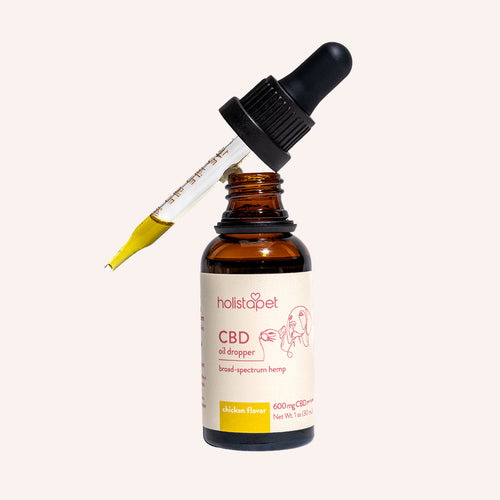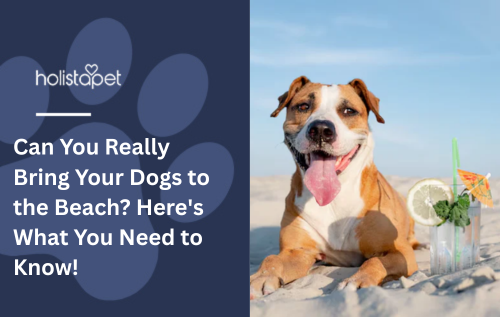"Dog park near me." It's a simple search, but the meaning runs deep. You're opening the gate to joy and connection.
You see, dogs thrive on play and fresh air, and somewhere nearby, there's a spot that brings just that. You just have to know where to sniff it out.
What Is a Dog Park?

A dog park is a shared space where canine pets can stretch their legs, meet new friends, and enjoy the outdoors. It's a place made just for them, with room to run, sniff, and just be, well, a dog. Some parks are simple and grassy, while others include trails, fenced areas, and even splash pads. But no matter the size or layout, they give pets a chance to play freely and safely.
Purpose and Benefits for Dogs and Owners
Dog parks encourage movement, connection, and balance. They're good for your pooch, and honestly, they're pretty great for you, too. Here's why:
- Physical Exercise for Dogs. Running, jumping, and chasing help dogs stay fit and content.
- Socialization With Other Dogs. Off-leash areas help pups build confidence and learn how to interact with other dogs in a safe setting.
- Mental Stimulation. New smells, sights, and playful activities keep curious minds engaged.
- Relaxation for Owners. Benches and shaded areas offer a quiet break while your dog plays.
- Community for Pet Parents. These parks connect local dog owners who share tips and laughs.
Why They're Growing in Popularity Nationwide
More dog parks are popping up because people want more than just sidewalks and leashes. Cities are recognizing that dogs need their own area, and so do their humans. It's also about connection. These parks bring neighbors together, turning routine walks into joyful moments.
How To Find the Best Dog Park Near You
The best dog park depends on your buddy's personality and your daily routine. Start by listing your needs. Do you require fenced-in areas? Are drinking fountains essential? Once you have a checklist ready, there are easy ways to narrow your choices down.
Online Resources and Dog Park Finder Tools
Start with a dog park locator or pet-friendly map app. These tools let you search by city, feature, or size of the park. For example, websites like BringFido or local parks department pages often list updated info, including photos and park rules. Some resources also include reviews from other dog owners.
How To Use Google Local Search To Locate Nearby Dog Parks
Just type "dog park near me" into the search bar. You'll see a map with nearby locations, hours, ratings, and reviews. Click on a park name to get more details, like whether it's fenced in or off-leash. You can also check photos, read comments from other owners, and see if there are amenities like water fountains or shaded areas.
Asking Local Pet Owners and Vets for Recommendations
Sometimes, the best tips come from people. Local dog owners often know which parks are clean, friendly, and fun, so talk to them.
Your vet is also a solid source. They may know which dog parks are safest or least crowded, especially for pets with special needs. A quick conversation can point you toward a gem you might not find online.
Reading Reviews and Visiting Beforehand
Online reviews can tell you a lot. Look for mentions of cleanliness, crowd size, and maintenance. Comments from other dog owners often point out things like broken gates or handling of aggressive behavior.
But don't stop there. Head to the park without your dog first. Walk around. Watch how the dogs and owners interact. Check for shade, seating, and water stations. A quick look helps you decide if it's the right spot for your pooch.
Types of Dog Parks
Different dog parks offer different vibes. Some are quiet and tucked away. Others feel like a full-blown dog carnival. Here are the different types, which we'll discuss more in the next sections:
- Off-Leash Dog Parks
- Leash-Only Dog Parks
- Urban Dog Parks
- Nature Trails
- Private Dog Parks
- Dog Parks With Special Features
Off-Leash vs. On-Leash Dog Parks
Off-leash parks give energetic canines the freedom to run, wrestle, and play without restriction. These spaces are usually fenced in and designed for safe, open movement.
On-leash parks, on the other hand, offer a more controlled environment. They're great for young dogs still learning manners or those who feel nervous around other animals.
Urban Dog Parks, Nature Trails, and Private Dog Parks
Urban dog parks squeeze excitement into small spaces, often tucked between buildings or built right into city blocks. They offer convenience for dog owners who don't want to travel far just to let their pets play.
Nature trails give canines more room to roam. These parks stretch out along wooded paths or wide-open land, offering fresh air and a slower pace.
Lastly, private dog parks are usually pay-to-play and less crowded. They're quiet and clean, and they offer extra perks for furry friends.
Dog Parks With Special Features
Some dog parks go beyond the basics. You'll find splash pads where pups can cool off on hot days, perfect for breeds that love to swim. Agility equipment, from tunnels to mini hurdles, adds a playful challenge.
Others feature shaded seating, picnic tables, and washing stations near the entrance. Some also offer separate dog runs for small or timid canines. These extras turn an ordinary outing into a full-on adventure.
What Makes a Great Dog Park?
A great dog park feels safe, welcoming, and built with canine pets in mind. The little details matter just as much as the big ones. Here's what to look for:
- Separate Spaces for Different Dogs. Designated areas for small dogs and large breeds keep things calm and fair.
- Reliable Safety Features. Fencing, double gates, and clear visibility help prevent issues before they start.
- Comfort for Humans. Benches, shade, and walking trails make it a nice place to stay a while.
- Good Ground and Drainage. Dirt, turf, or mulch with proper drainage keeps paws clean.
- Water and Amenities. Drinking fountains and cleanup stations show care and proper maintenance.
Separate Spaces for Large and Small Dogs
Parks with separate areas for small and large dogs help everyone stay comfortable. Tiny pups don't have to worry about getting bumped by a big, bouncy friend. Divided spaces also help with managing different play styles, as some dogs like gentle sniffing, while others go full zoomies.
Safety Features
Safety is the foundation of a great dog park. Keep an eye out for these security features:
- Enclosed Fencing. Tall, secure fencing keeps dogs from wandering off. Parks with double gates add another layer of safety, which is especially helpful for escape-prone breeds.
- Clean Surfaces. Regular maintenance helps reduce mess, odors, and unwanted germs.
- Ground Cover Material. Surfaces like turf, mulch, or decomposed granite offer cushion and reduce muddy paws.
- Proper Drainage. Good drainage keeps things dry and prevents puddles from forming after rain or water play.
- Visibility for Owners. Clear sightlines help humans keep track of their dogs and step in quickly if needed.
- Lighting for Evening Use. Well-lit parks make early mornings and late afternoons feel safer.
Shaded Areas, Seating, and Water Stations
Shaded areas give dogs a place to cool off after all that running and chasing. It's especially helpful during warmer months when the heat creeps in fast.
Benches and picnic tables let the humans relax, chat, and enjoy the view. Water stations are must-haves, too. Easy access to fresh water keeps everyone safe and relieved.
Common Dog Park Rules and Requirements
Dog parks might feel casual, but they still come with rules. These guidelines keep everyone safe, clean, and happy:
- Vaccination and Licensing. Most parks require up-to-date shots and a current dog license before entry.
- Leash Laws and Protocols. Some areas are off-leash, others are not. Always follow posted signs.
- Age and Breed Guidelines. Young puppies or certain breeds may have restrictions based on park regulations.
- Cleanup Expectations. Owners must clean up after their dogs. Waste bags are often provided but bring extras just in case.
- Behavior and Supervision. Dogs should stay under voice control and monitoring at all times. No aggressive behavior allowed.
Vaccination and Licensing Requirements
Before your pup sets paw inside a public dog park, they'll need to be up to date on vaccines. This protects not just your pooch, but every dog in the area. Core vaccines are usually required, and some parks may ask for proof.
Licensing is also a common rule. Many cities require dogs to be officially licensed to use public spaces. It's a quick step that shows you're a responsible owner, and it helps keep your local parks safe and organized.
Leash Laws and Off-Leash Protocols
The rules can vary by location. Some dog parks have a mix of both, offering open play areas and leash-required zones. Always check the signs near the entrance, so you know what's expected before unclipping that leash.
Even in off-leash areas, your pup should stay under voice control. That means being able to call them back if things get too rowdy.
Age and Breed Restrictions
Some dog parks have age rules in place to keep younger pups safe. Many spots require dogs to be at least four months old before joining the group. That way, they've had time to grow, build confidence, and complete early vet visits.
Breed restrictions may also apply, depending on the park or city. These rules aren't always common, but it's good to check ahead. Each park sets its own standards, and knowing them helps avoid surprises at the gate.
Dog Park Etiquette Every Owner Should Know
Always keep your eyes on your dog, and be ready to step in if things get too rough or your pup starts acting up. Stay close enough to intervene, bring waste bags, and keep treats or toys to a minimum (not all dogs like to share). Always follow posted rules, respect other owners, and make sure your dog responds to voice commands. Simple steps like these keep the park safe and fun.
Monitoring Behavior and Stepping in When Needed
Always watch your dog. That means staying alert and not distracted by your phone. Canines can switch from playful to pushy in seconds, especially in a group setting.
Step in fast if your pooch shows signs of agitation, like raised fur, stiff posture, or excessive barking. If another dog looks uncomfortable, give space or move on. Don't wait for a fight to start.
Picking up After Your Dog
Leaving waste behind isn't just rude, it spreads germs and makes the park less enjoyable for everyone. Most places have waste bags and trash bins, but it's smart to bring your own just in case. Watch closely, so you don't miss the moment. If your dog goes, scoop it right away. Other dogs and people walk through those same areas, and no one wants a messy surprise.
Avoiding Toys and Food That Could Trigger Fights
Bringing toys or treats might seem harmless, but they can stir up trouble fast. Some dogs get protective or possessive, especially in busy spaces with unfamiliar pups nearby. So leave high-value items at home. And if you do bring a toy, stay close and be ready to step in. Keeping things simple helps avoid tension and makes playtime smoother for everyone.
Tips for Your First Dog Park Visit
First dog park visits can be exciting. Plan ahead so that you and your pup have a smooth, fun time from the start. Here's what you can do:
- Check the Rules First. Look up park rules online or posted at the entrance, so there are no surprises.
- Bring Waste Bags. Even if the park provides them, always have a few extras in your pocket.
- Start During Quiet Hours. Visit early or midday to avoid big crowds and help your dog ease in.
- Keep the First Visit Short. Let your pup get a feel for the space without overdoing it.
- Watch Your Dog Closely. Stay engaged, so you can step in if your dog looks nervous or too excited.
What To Bring and What To Leave at Home
Pack light but smart. Bring the basics: collar with ID tag, leash, and waste bags. If it's hot out, bring a water bottle and bowl. Some parks have fountains, but not all of them work.
Leave the toys, treats, and food at home. These can trigger tension between dogs. Skip anything loud, flashy, or distracting. The simpler your setup, the easier it is to focus on your buddy and enjoy the park visit without drama.
Signs Your Dog Is Having a Good (Or Bad) Time
 A happy dog is easy to spot: loose body, wagging tail, playful hops, and friendly sniffing. If your pooch keeps going back for more play and checks in with you now and then, they're probably loving it.
A happy dog is easy to spot: loose body, wagging tail, playful hops, and friendly sniffing. If your pooch keeps going back for more play and checks in with you now and then, they're probably loving it.
But if your dog hides, growls, shows their teeth, or freezes up, it might be time to leave. These signs mean they're not enjoying the park or they're too overwhelmed.
If your dog gets nervous, timid, aggressive, or hyper in social settings, calming support may help. HolistaPet offers gentle, plant-based options like CBD Calming Chews, CBD Dog Treats for Anxiety, and Broad-Spectrum CBD Oil. These soothing products promote better focus and make social play easier for sensitive pups.
Alternatives to Dog Parks
Dog parks aren't the only way to give your pup room to play. If they aren't comfortable around other animals or if the nearest park isn't ideal, there are still plenty of solid options. Backyards, quiet walking trails, and doggy daycares can all offer a fun break from the usual routine. What's important is finding a safe space where your furry friend can move, sniff, and burn off energy.
Private Yards, Doggy Daycares, or Neighborhood Walks
Private yards offer space without the crowds. It's a great, low-stress option for daily play. There are no leash laws and strangers, so your pup can do their thing.
Doggy daycares are another choice. Supervised play, indoor options, and smaller group sizes make them ideal for pets who like routine.
And don’t underestimate a good old-fashioned walk around the block. It keeps your dog moving and gives them fresh sights and smells to explore.
Indoor Dog Parks and Canine Activity Centers
Indoor dog parks are perfect for those who need playtime, rain or shine. These spaces offer climate control, clean surfaces, and fewer distractions from the outside world. They're great for dogs sensitive to heat, noise, or unexpected guests.
Canine activity centers take things a step further with obstacle courses, swimming pools, and even treadmills. They're a solid option for high-energy breeds who need more than a walk and for owners looking for something structured and safe.
Final Thoughts – Helping Your Dog Thrive at the Best Park Near You
Every pup deserves a spot where they can run free, sniff everything in sight, and feel at ease. The best dog park near you isn't always the biggest but the one that fits your buddy's pace, play style, and comfort level.
If your pooch needs a little help easing into new spaces or social scenes, HolistaPet’s calming CBD products can lend a hand. They're natural, gentle, and made just for dogs who need a softer landing during play.


 CBD Oil for Dogs - Fast Acting
CBD Oil for Dogs - Fast Acting
 Chicken Flavored CBD Oil For Dogs - Easy Dose
Chicken Flavored CBD Oil For Dogs - Easy Dose
 Salmon Flavored CBD Oil For Dogs - Highly Rated
Salmon Flavored CBD Oil For Dogs - Highly Rated
 CBG Oil for Dogs and Cats - Loved by Thousands
CBG Oil for Dogs and Cats - Loved by Thousands





Leave a comment
All comments are moderated before being published.
This site is protected by hCaptcha and the hCaptcha Privacy Policy and Terms of Service apply.